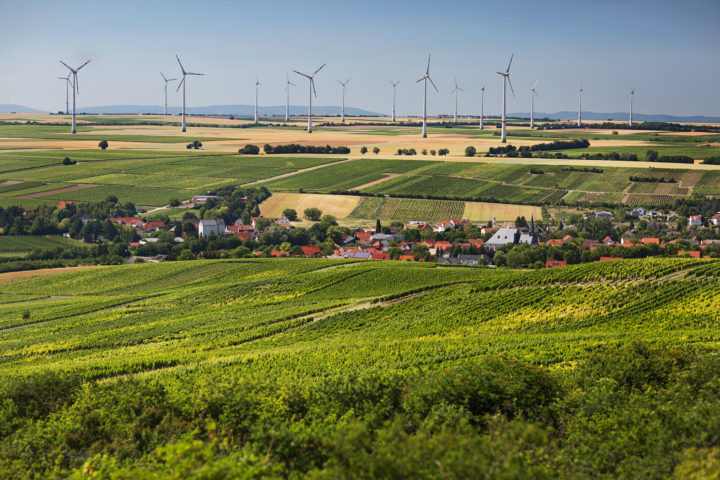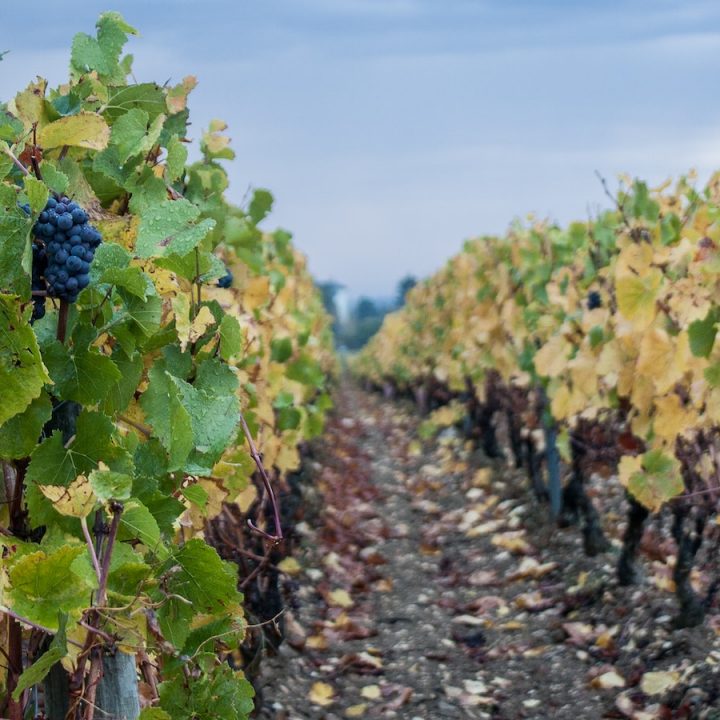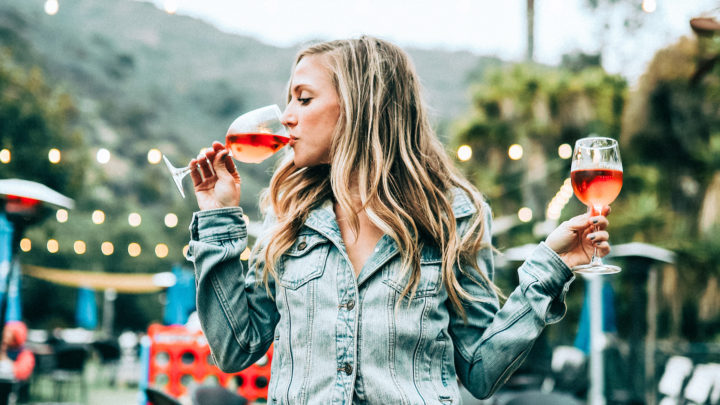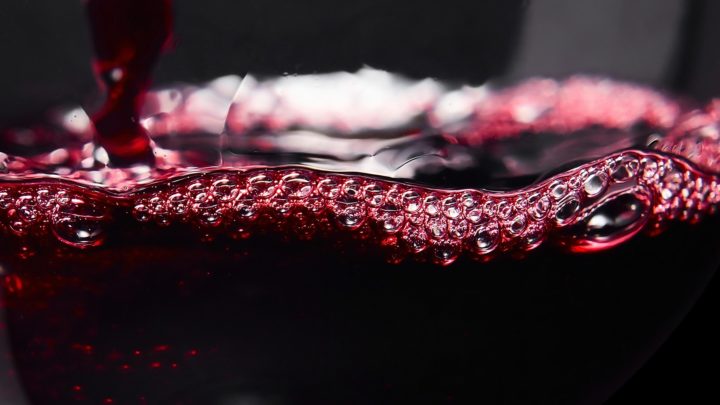If my grandmother heard about the quantity-quality law, she would probably wave her hands snappishly and dismiss it as silly gossip, because her motto in the kitchen was “A lot helps a lot!” – with which she justified her use of exorbitant amounts of butter. What works for hearty gravies and brings flavor to the food, makes for undrinkable bulk wines in wine-making.
The quantity-quality law states that the fewer grapes that grow on a vine, the higher the quality of the wine produced from it. Why this is so, and how the winemaker can reduce his crop naturally or artificially to increase the quality of the wine, you will learn in this article.
Quantity-Goodness Law – Shoot Controlled Vine

The vine is a living being and needs water and food to survive – like all of us. In addition to the pure survival instinct inherent in it, it has a strong drive for species preservation.
Each year, a vine puts much of its energy into reproduction – by producing flowers that, after pollination, mature into fruit. In these are found the descendants of the vine, the grape seeds.
The rest is very simple: the tasty fruits, including their seeds, are eaten by birds. Since birds do not chew their food and their digestive system also does not attack the seeds, they are later excreted with a good portion of fertilizer. In the best case, a new vine grows in this place.
But the vine is not satisfied with only one offspring. It wants to produce as many offspring as possible, because not all seeds later fall on fertile soil and grow into an independent plant.
To increase the chances of their reproduction, the vine has come up with a trick. As their seeds ripen in the form of grape seeds, the flesh surrounding them also ripens. The plant uses photosynthesis to form sugar, which it stores and accumulates in its berries. With the help of its roots, it draws water from the soil and also stores it in the fruiting bodies. In the process, valuable minerals and trace elements also enter the grapes, albeit in smaller quantities.
Now that the seeds are ripe, the plant wants to make its fruits as tasty as possible for the birds, so that many of the fruits are eaten and the seeds they contain are carried on. For this simple reason, fruits are usually tasty.
However, the vine likes to overreach itself and produce more fruit than it should – at least in the sense of the winemaker.
The vine and its energy balance
As already mentioned, the goal of the vine is to produce as many offspring as possible – without regard to losses.As with any living creature, the vine has only a limited energy reservoir available for this purpose.
Each grape and each of its berries requires a certain amount of energy to be harvested fully ripe by the winemaker in the fall. If more grapes hang on a vine than it can supply, the fruit will not reach its maximum physiological ripeness. In these berries is a lot of water, little sugar and even less minerals and valuable trace elements.
It is possible to make wine from these grapes – a lot of wine, in fact – but it will lack body and extract content. Perfect for thin and cheap mass wines, but unacceptable for quality wines with artisan standards.
Quantity-quality law – ways of yield reduction
How many fruits a vine forms depends on various factors. The age of the vine, the weather and the soil play a decisive role.
Old vines = fewer grapes
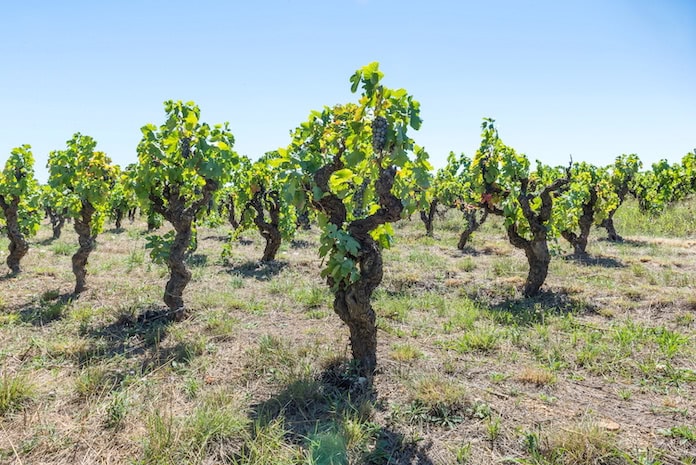
As with humans, the vine is growing out of its “wild years.” With age, it produces fewer grapes each year. Between their 12th and 25th year of life, vines achieve their highest yields.
However, old vines have a great advantage over their young counterparts: their well-developed root system. In search of water and nutrients, the vine digs itself up to 30 m deep into the ground. It does not take much imagination to realize that such a root network can absorb far more water and nutrients and store them in the grapes. A difference you can taste. Wines from decades old are simply more complex and extract. Since this has not been a secret for a long time, many winemakers now advertise with the term “old vines” on their wines.
However, it is not prescribed when a vine may be called old, which is why the designation should be critically questioned. Everything between 15 and >90 years has already come under our eyes with “Old Vines”.
Quantity-Goodness Law – Barren Soils for Lower Yields

If you take a closer look at vineyards, you will notice that they are often planted on soils that would otherwise be good for almost nothing. No fruit tree would thrive on the vertiginous and slate-strewn steep slopes of the Moselle. The vine, on the other hand, is a true survivor.
Their roots still find the smallest gap in the rock or dig their own. The dry and nutrient-poor soils force the vine to reduce its yield – in a completely natural way. The lack of water simultaneously ensures that the vine extends its roots further and deeper into the stony soil.
Competition in the vineyard – More vines on less area
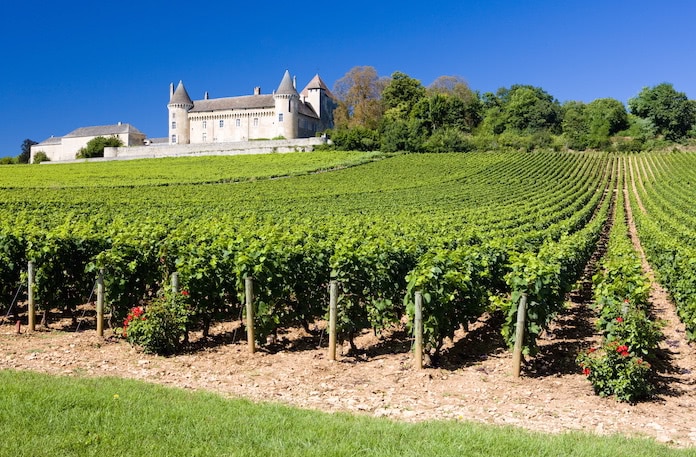
A vine that stands alone in a wide open space has all the water and nutrients of the environment to itself. It does not need to exert itself, which in turn ensures that its root system remains manageable. Why bother when you already have everything anyway? In this respect, vines are no different from us humans.
Vineyards are therefore densely planted. The stocking density here is up to over 12,000 plants per hectare. The dense planting also has the advantage that the vineyard is easier to work by hand. The ancient Romans would probably have just smiled wearily at 12,000 plants. At that time, up to 30,000 vines per hectare were not uncommon.
Plants communicate with each other and know about their neighborhood. What looks like an idyllic vineyard to us is a battlefield for the vine, where it fights for its survival and that of its descendants. Due to the persistent lack of available nutrients and water, the vine reduces its yield and cares intensely for its few fruits, which it absolutely must bring to maturity. After all, the vine never knows if it will survive this struggle for long.
Quantity-Goodness Law – Pruning & Education System
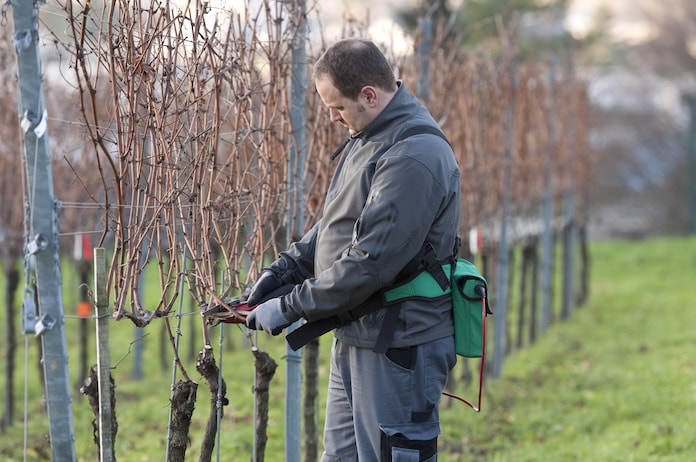
Despite the aforementioned methods that naturally reduce grape yields, the grape grower can’t just put his feet up and let nature do its thing.
Two important components for maintaining the quantity-quality law are pruning and the method of training the vines. How the vine is cut back in the winter in the process, depends largely on the particular system of education.
The aim of winter pruning is to obtain the best possible balance between foliage and grapes in the coming year. If the vintner left all the shoots from the previous year, the vine would bear far more grapes, but would only be able to supply them with a few nutrients.
The green cut – No place for ostentatious grape

Despite poor soils, nutrient deficiencies and consistent pruning, young vines in particular tend to produce more grapes than they can supply. To counteract this, the winemaker intervenes in the vineyard and removes grapes that are too large or cuts them in half so that all the energy of the vine can flow into the remaining fruit. Through this measure, more sugar and minerals and trace elements flow into the berries left over.
Hail & frost – weather caprices as yield reducers
The vine is a fighter and can survive in winter even in double-digit minus temperatures. Late frost in the spring, when the canes have already sprouted and may have already formed flowers, is a disaster for them and the winemaker. In the worst case, frost damage causes the vine to expend all its energy to sprout again, which can lead to the grapes not having enough time to ripen.

Once the Ice Saints are over, hail and storms pose the greatest threat to the vintner and his vines. It is not uncommon for hailstorms to completely defoliate the vine and destroy the fragile skin of the grapes, which then dry out or fall victim to mold. Strong storms can also take a toll on the vines. Especially in exposed steep slopes, this hits the vineyard with full force and tears off leaves and sometimes entire plant parts.
The 2016 wine year of the Austrian Oggau estate (Neusiedlersee, Burgenland) shows how severe the consequences can be. This year they lost 2/3 of their harvest to frost and hailstorms.
The rule that less fruit on the vine makes for more concentrated and better wines is indisputable. However, the quantity-quality law also has its limits. From a certain yield reduction, there is no more improvement of the wine. It is important to maintain a natural energy balance in the vine so that it bears only as much fruit as it can adequately supply.
If you still doubt climate change, just ask some friendly winemakers if they are feeling the effects. In recent years, in addition to the late frosts and hailstorms, another threat has been added to the vines: the prolonged periods of drought. While old vines with their deep roots still get enough water, young vines are in danger of drying out.
Legally prescribed yield reduction for the production of quality wine
Almost everywhere where wine is produced, there is an upper yield limit for quality wines. If the winemaker exceeds this limit, he must expect that his wine will no longer be approved as a quality wine and will be downgraded.
The respective yield level depends on the respective wine-growing region and the quality requirement. While strict regulations in some Grand Cru vineyards in France only allow 35 hectoliters (per hectare of vineyard area), in Australia up to 200 hectoliters are possible. Quality wines from different countries are therefore difficult to compare with each other.
Menge-Güte-Gesetz: Prescribed maximum yields of German wine-growing regions
| Wine region | Yield in hl/ha |
|---|---|
| Moselle | 125 |
| Ahr | 100 |
| Middle Rhine | 105 |
| Near | 105 |
| Palatinate | 105 |
| Rhinehessen | 105 |
| Saale-Unstrut | 90 |
| Saxony | 80 to 90 (1) |
| Hessian mountain road | 100 |
| Rheingau | 100 |
| Baden | 90 |
| Württemberg | 110 to 150 (2) |
(2) For the steep slopes delimited in the vineyard plan and bindingly declared to the Community vineyard register
Conclusion: The quantity-quality law – Better less, but better wine!
The rule that less fruit on the vine makes for more concentrated and better wines is indisputable. However, the quantity-quality law also has its limits. From a certain yield reduction, there is no more improvement of the wine. It is important to maintain a natural energy balance in the vine so that it bears only as much fruit as it can adequately supply.


